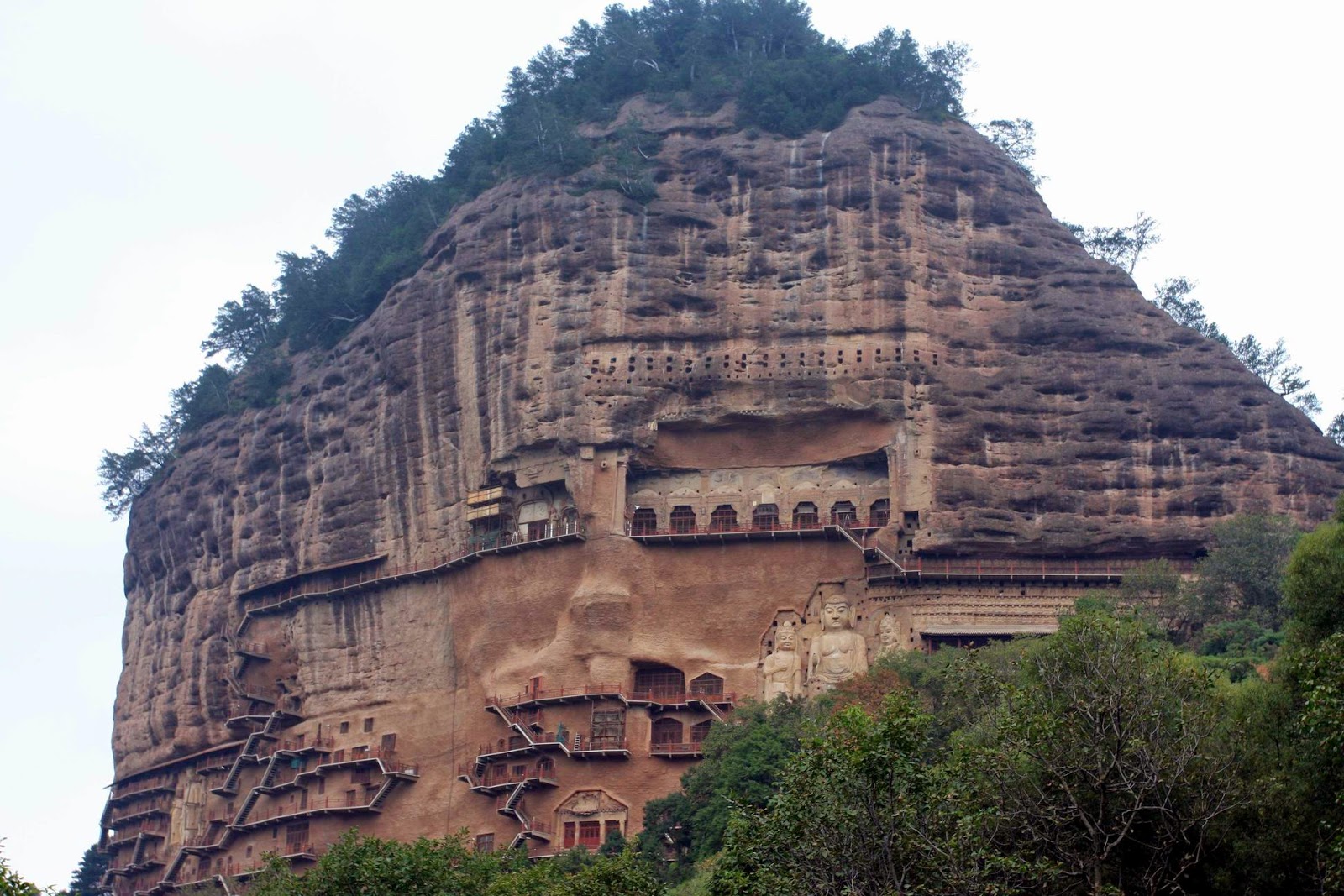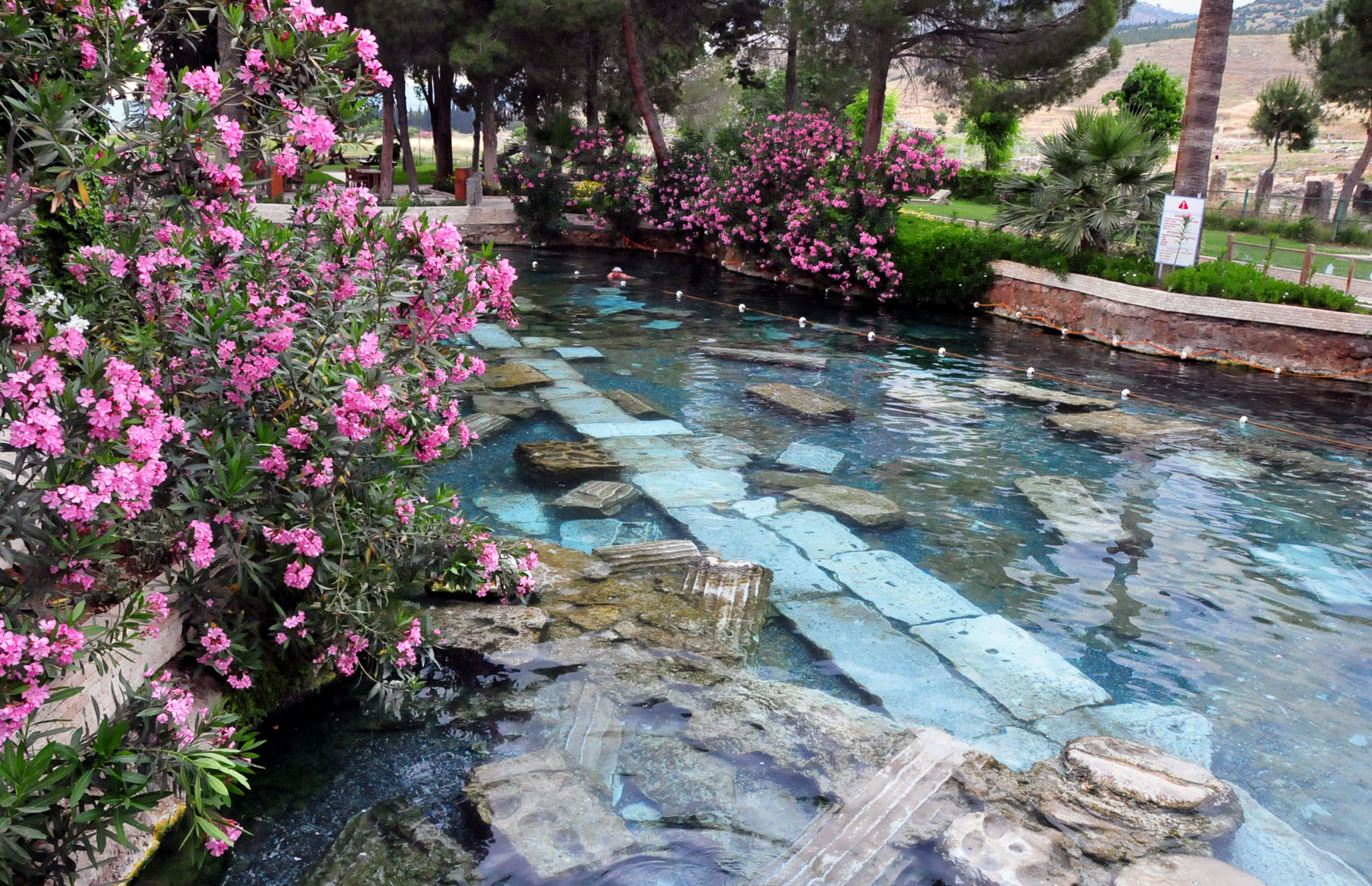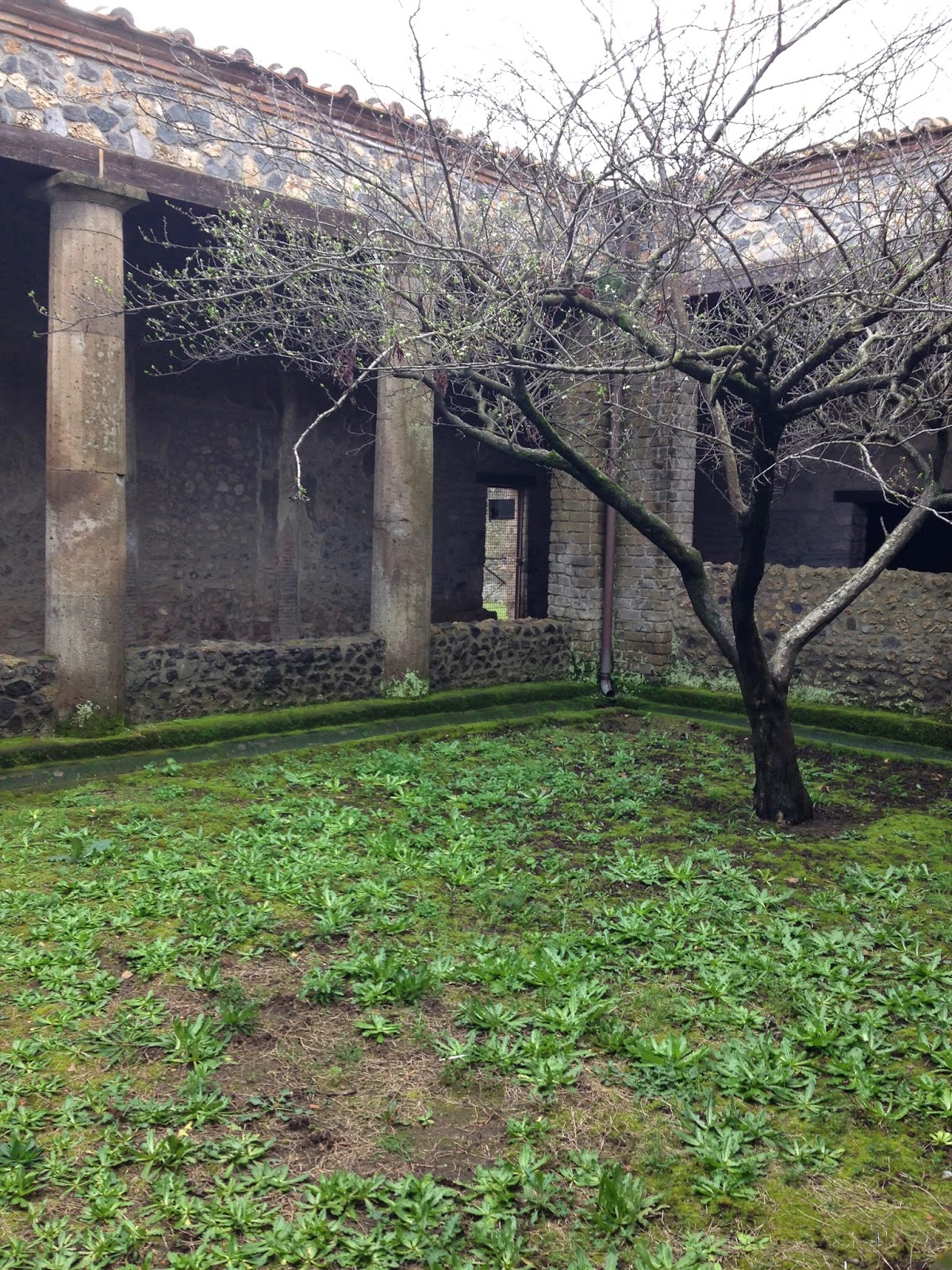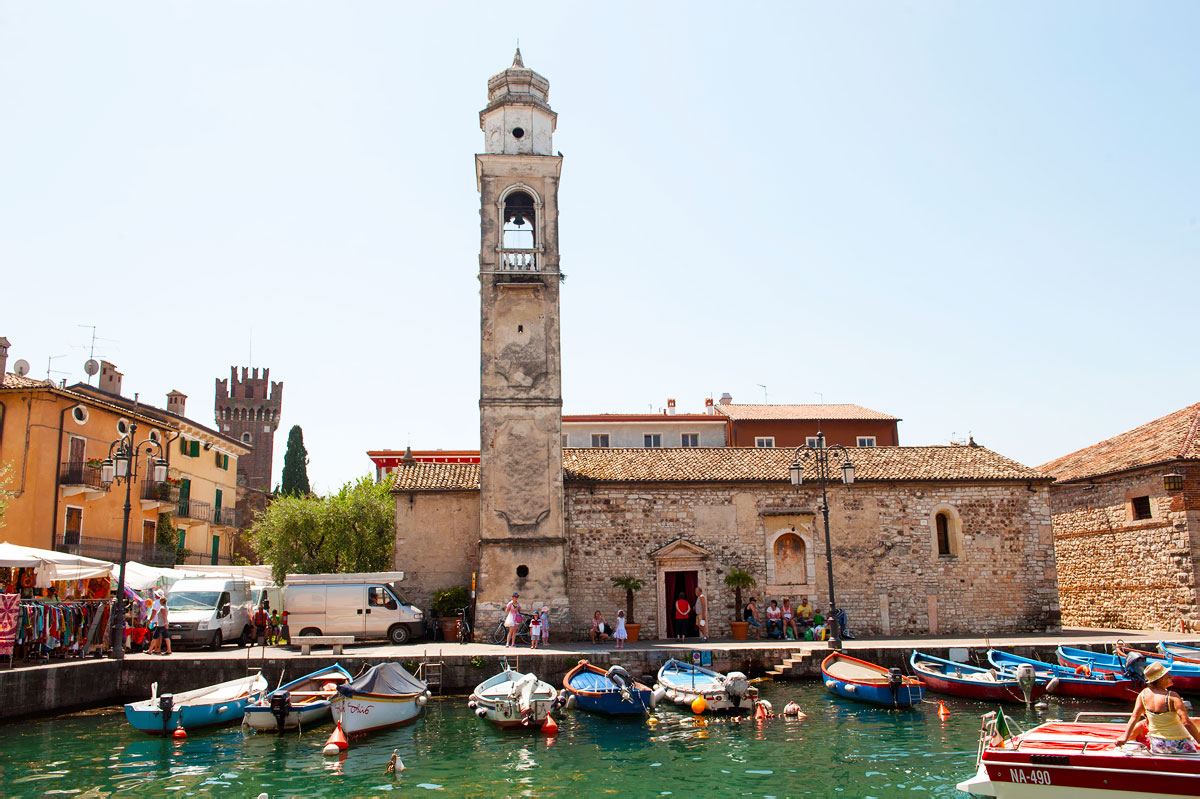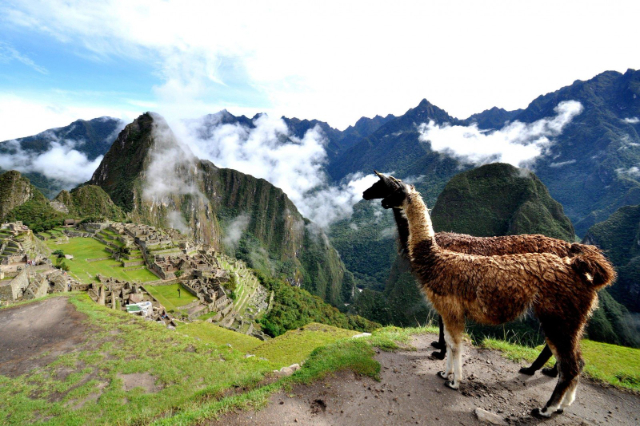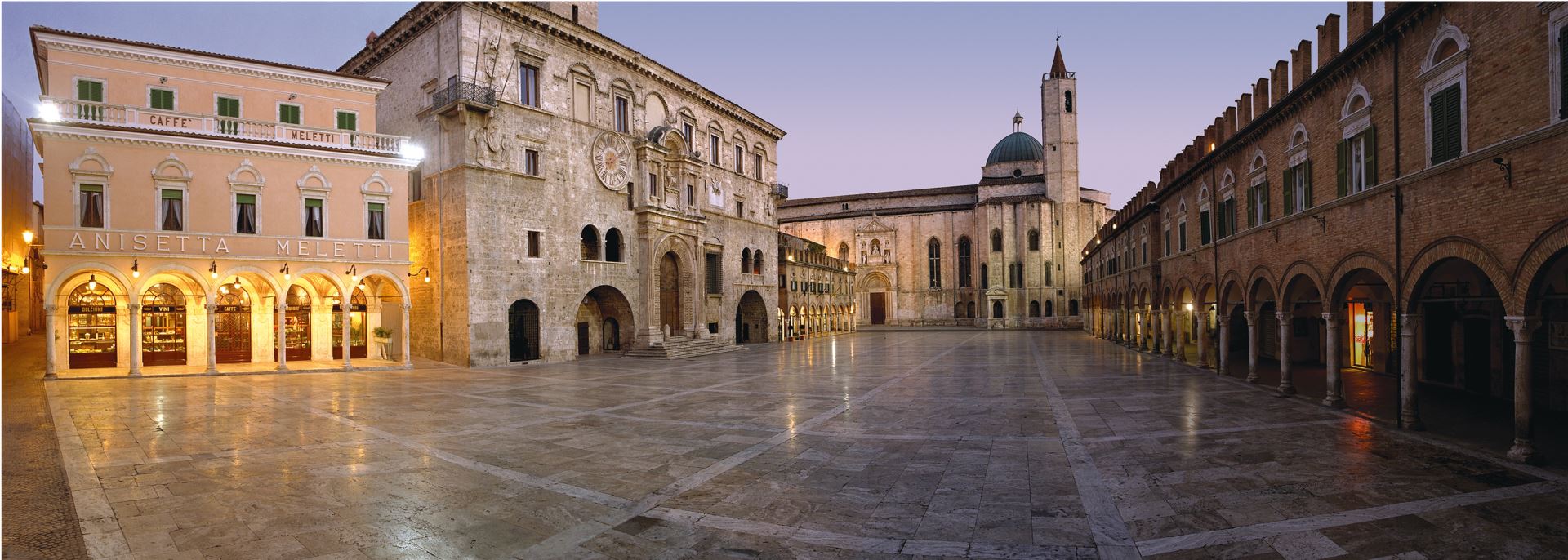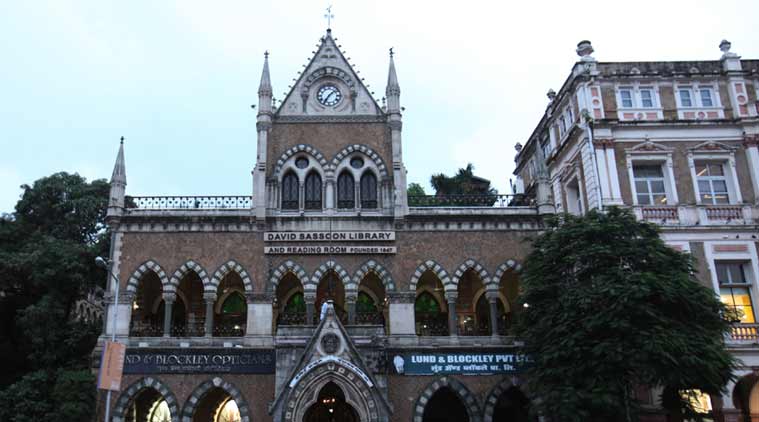Maijishan Grottoes
Located 45 kilometers (about 28 miles) southeast of Tianshui City in Gansu Province, Maiji Mountain rises up abruptly 142 meters (about 155 yards) from the landscape. The people named the mountain ‘Maiji’ because it resembles a stack of wheat straw (mai meaning wheat, and ji meaning stack). On the sheer cliff that marks the southwest side of Maiji Mountain, people have labored for centuries carving niches and caves, giving rise to what is known today as the Maijishan Grottoes. Also known as Maijishan Caves or Maiji Caves, it was included on the World Heritage List on June 22, 2014.
Inside the caves are clay statues, whose heights vary from 20 centimeters (about 8 inches) to 15 meters (over 49 feet). Besides 194 Buddhist caves and niches, containing more than 7,200 clay statues, there are also murals of over 1,300 square meters (about 1,555 square yards) in the Maijishan Grottoes as well. These statues are works of art that reflect ancient craftsmanship and dedication to the Buddhist ideal. Rarely can one find caves and statues carved over sheer cliffs in China, and this is one of the most distinguishing features of Maijishan Grottoes. Being carved on the cliff, these caves are connected by plank roads that hang precariously along the face of the cliff. Visitors can only reach each cave by using these plank roads, which offers a breathtaking experience.Work on the Maijishan Grottoes began in the late Qin Dynasty (221 BC – 206 BC), progressing through to the Qing Dynasty (1644 – 1911). The Northern Wei (386 – 534) period was also a time of its great prosperity, and Buddhism began to prevail as a cultural force. Subsequent dynasties added to and sometimes rebuilt the caves according to the styles of the era. Interestingly, although the statues were built at the same location, none of them maintained a similar style with those preceding it. Statues from each dynasty clearly developed distinct elements.
